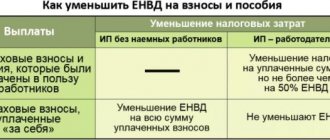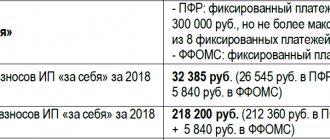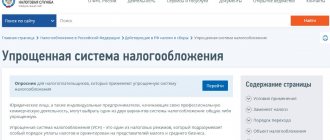Despite the fact that the tax collection system in Russia is quite strict, it provides for some conditions under which enterprises and individual entrepreneurs can reduce the amount of funds paid to the state treasury. This is especially important for small and medium-sized businesses, since they are the ones who feel the full tax burden. Therefore, any legal opportunity to reduce tax payments is used by them one hundred percent. This equally applies to those individual entrepreneurs and organizations that have preferred a special taxation regime for UTII.
UTII subjects and features
As is known, those companies and individual entrepreneurs that are engaged in strictly defined types of activities, including the production and sale of goods, as well as the provision of various services to the population, can pay the Unified Tax on imputed income. Each region determines the list of activities falling under UTII independently, depending on on individual economic characteristics.
The main distinguishing feature of UTII is that the tax is paid by tax subjects not on actual profit, but on estimated income. The tax payment amount is fixed, although it may vary slightly depending on the location of the taxpayer.
If an enterprise or individual entrepreneur has switched to paying UTII, then this tax will have to be paid regardless of the amount of revenue . Even if for some period of time the business stood still, there were no agreements, contracts or transactions, you will still have to pay the tax fee. The only exceptions are those situations that are valid reasons for suspending activities, however, they must be documented.
The transition to UTII is strictly voluntary and requires only the submission of a corresponding application to the tax authorities.
What fixed payments should I pay?
Individual entrepreneur on a patent - what taxes to pay, mandatory contributions
The amounts of mandatory contributions for Russian individual entrepreneurs under the imputed taxation regime are established by the norms of Art. 430 of the Tax Code of the Russian Federation and in 2021 are:
- contribution to the Pension Fund, provided that the income for the calendar reporting year did not exceed 300 thousand rubles. — 29.3 thousand rubles;
- contribution to the Pension Fund, provided that the income for the calendar reporting year exceeded 300 thousand rubles. — 29.3 thousand rubles. + 1% of the excess amount (not more than 234.8 thousand rubles);
- contribution for compulsory health insurance - 6.8 thousand rubles.
Important! For failure to pay due fees, a fine in the prescribed amount + a penalty for each day of delay will be charged.
UTII: calculation and coefficients
To calculate UTII, accountants use a special formula. It is quite simple, but when using it you need to know the existing correction factors K1 and K2. K1 is formed at the federal level by the Ministry of Economic Development and depends on the amount of inflation, and K2 is developed by local governments based on certain territorial factors. These coefficients change every year, so it is important to track these changes.
The formula is:
Conditional basic yield * physical indicator * K1 * K2 * 15% = UTII
It should be remembered that the basic profitability for each type of activity is different, the same applies to physical indicators.
If an organization or individual entrepreneur has several types of activities on UTII, then taxes must be calculated for each of them separately.
After calculating UTII, a completely logical question arises: what ways exist to reduce the calculated tax using legal methods?
Attention! Reducing UTII, as well as any other tax levy, is quite possible. The procedure for reducing the “imputation” is prescribed in Article 346.32 of the Tax Code of the Russian Federation. It clearly indicates the expenses that reduce this tax levy.
These include:
- contributions under personal insurance contracts,
- payment of sick leave benefits at the expense of the employer,
- all insurance payments to extra-budgetary funds.
How to pay individual entrepreneur taxes on UTII without employees
The amount of imputed income directly depends on several factors, including region and type of activity. According to Art. 346.31 of the Tax Code of the Russian Federation, the rate is set at 15% of income, but the final amount is adjusted by coefficients K1 and K2.
The procedure for reducing the amount of taxation
The tax amount is determined by the formula:
UTII = Bd x Fp x K1 x K2×15%, in which:
- BD - basic income;
- FP - physical indicator;
- K1 - established deflator coefficient (determined taking into account inflation);
- K2 - adjustment coefficient (directly depends on the type of business activity and is determined by location).
Important! Since October 2015, regional legislation has allowed the possibility of using a rate of 7.5 to 15% for each individual category of taxpayer and type of employment.
Procedure for calculating UTII
The Tax Service has established a reporting period of three months (quarter) for entrepreneurs who use imputation. According to the norms of federal legislation, the tax must be transferred by the 25th day of the month following the previous reporting period.
If the payment date falls on a weekend or non-working holiday, payment is made on the first working day after the holiday.
Reducing UTII for individual entrepreneurs with employees
As the law states, individual entrepreneurs who hire employees have the right to reduce tax contributions to the state budget by half the amount of insurance premiums paid from the staff’s earnings. At the same time, fixed payments made by individual entrepreneurs to extra-budgetary funds for themselves personally do not affect the amount of tax collection in any way.
Important! Individual entrepreneurs with hired personnel do not have the right to take into account fixed payments to extra-budgetary funds made for themselves to reduce the amount of UTII tax. It should also be noted that the limitation on tax reduction of 50% for individual entrepreneurs applies only to those tax periods in which he had employees.
BUT! New changes are coming from 2021. In particular, rules will come into force allowing individual entrepreneurs to include in the specified 50% contributions made to extra-budgetary funds not only for employees, but also for themselves personally.
Example: Individual Entrepreneur Vintikov T.K. paid 5000 rubles. to the Pension Fund and 2000 rubles. to the MHIF for yourself. He also paid 2,200 rubles. per employee in the Pension Fund and 510 rubles. for him in the Federal Compulsory Medical Insurance Fund. The amount of UTII is 19,000 rubles. Let's do the calculation:
UTII = 19,000 rub. – ((2200 rub. +510 rub.) / 2) = 17645 rub. - this is exactly how much he must pay as UTII to the state budget.
Changes for 2021 when calculating UTII tax
The main change in 2021 for UTII is the increase in the K1 coefficient from 1.915 to 2.005. This led to a slight increase in taxes. In 2021, as in the past, entrepreneurs without employees reduce the calculated quarterly tax by the amount of contributions paid for themselves. Previously, it was only allowed to reduce UTII for insurance premiums for individual entrepreneurs with employees. Moreover, in this case, only amounts paid for hired personnel could be taken into account, and individual entrepreneurs’ contributions for themselves were not taken into account at all.
Disputes about the possibility of including payments for entrepreneurs’ own insurance into the calculation have been going on for several years. Individual entrepreneurs on UTII believed that this situation puts tax payers in an unequal position compared to those who work on the simplified tax system for income.
Read about the procedure for reducing tax payments at the expense of individual entrepreneurs’ insurance premiums for themselves using the simplified tax system for income here.
True, this comparison cannot be called correct, because the simplified tax system and UTII are fundamentally different regimes. But the patent taxation system, similar to UTII, in 2021 does not allow for tax reduction to take into account contributions paid for oneself or for employees.
Be that as it may, in 2021, UTII payers and those who work on the simplified tax system for income reduce calculated tax payments for the amount of contributions paid according to the same principle:
- if the individual entrepreneur does not have employees, the tax payment is reduced by the entire amount of contributions paid for himself;
- if there are employees, then the tax payment is reduced by the amount of contributions (paid both for oneself and for employees), but by no more than 50%.
It is easier to pay taxes and insurance premiums with a current account. Many banks offer favorable conditions for servicing and maintaining current accounts; you can view the offers here.
Individual entrepreneurs without employees: reduction in UTII payments
If an individual entrepreneur does not use the help of employees and runs his business alone, then he has the right to reduce the amount of UTII deductions by the entire amount of fixed payments, that is, by 100% of payments made to extra-budgetary funds (PFR, MHIF) for himself personally.
In this case, it is very convenient for individual entrepreneurs - UTII payers who do not have hired employees - to divide fixed contributions into four parts quarterly and pay them at ¼ of the total annual contribution amount in each quarter. But even if for some reason this is not possible, it is important that the entire amount of fixed insurance premiums be paid in full during the year.
Example: IP Shklyaev D.K. no workers. In September of this year he paid 5,000 rubles. to the Pension Fund and 2000 rubles. to the MHIF. At the same time, the amount of his UTII tax payment is 17,500 rubles. After simple calculations, it is clear that he actually needs to pay to the budget: UTII = 17500-(5000+2000) = 10500 rubles.
Simplified taxation system (STS)
The simplified regime involves choosing the object of taxation: income or income reduced by the amount of expenses. Depending on the object, accounting for individual entrepreneur contributions varies.






